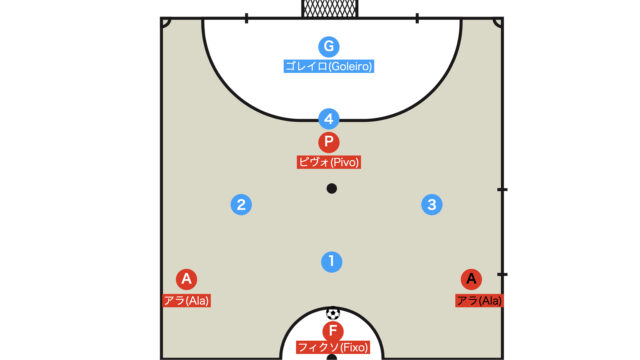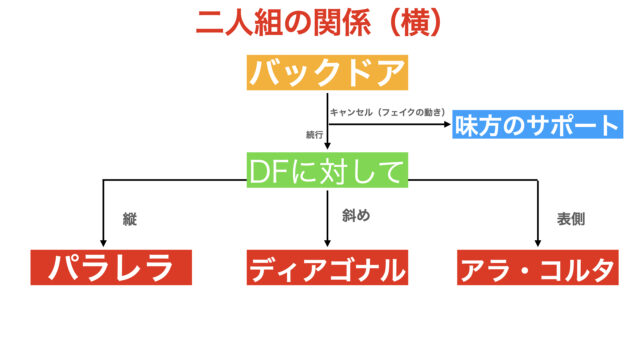For those who play futsal to some extent, there are probably few who haven’t heard the term “isolation”.
However, some mistakenly believe that a 1vs1 situation in futsal is synonymous with “isolation”.
Furthermore, although there is a tactic known as “overload” in power play, it seems many are not familiar with the term.
In conclusion, overload and isolation are opposites, and they occur simultaneously.
In other words, these two terms are two sides of the same coin, making it essential to grasp both tactics simultaneously.
This time, we will explain the tactics of overload and isolation, which are important in sports other than futsal (such as soccer and basketball) as well.
What are Overload and Isolation?

Overload (overload) refers to a state of excessive pressure, and indicates a situation where players are densely concentrated in a specific zone.
On the other hand, isolation (isolation) signifies a state of being isolated, referring to a scenario where players are isolated in a specific zone.
As shown in the figure above, overload and isolation occur simultaneously during a match, and the interpretation of these states can vary depending on how the zones are defined in that moment.
In other words, whether a situation is characterized by overload or isolation depends on individual perspectives.

A formation such as 3 on line (1 line)+1 can also be viewed as a state of overload and isolation.
Tactical Intent
Because overload and isolation are two sides of the same coin, it is crucial to understand the tactical intent of both, not just one.
This is because when an attack is not going well, shifting the ball to a zone in the opposite state can create variation and potentially cause lapses in the opponent’s defence.
Tactical Intent of Overload
The main objectives of overload are the following four points.
- Create local numerical superiority
- Reduce the distance between players to allow for quick, rondo-like passing
- Transition to the isolation side
- Counter-attack prevention

Overload is primarily a tactic emphasized in power plays, as shown in the figure above.
This tactic aims to exploit the principle that a local numerical superiority will naturally emerge from an overall numerical advantage (5vs4).
By creating a local numerical advantage (4vs3), the team advances towards the goal with quick, intricate passing, similar to a rondo.
If the defender on the opposite side (isolation), such as the blue number 2, drifts over to guard the overload side or loses sight of their mark while ball-watching, transitioning into isolation can create a 1vs1 opportunity in front of the goal.
In actual matches, there are many cases where a player exploits a backdoor run to get behind the opposing defence and score by segundo.
In power plays, overload is not part of the initial setup but is often created when players from the opposite side drift over using tactics such as sign play.
Since the team can quickly recover the ball even if it is lost, this also serves as a countermeasure against power play turnovers (counter-attacks).
Tactical Intent of Isolation
The tactical intent of isolation is to create space by isolating players in a specific area.

As shown in the figure above, by having players spread out on the opposite side, space is created in front of the ball holder, often setting up a 1vs1 situation.
Isolation in Positional Attack
Isolation in positional attack can be broadly divided into the following three categories.
- Ala Isolation
- Fixo Isolation
- Pivo Isolation
Ala Isolation
The formations for Ala isolation include the 2-2 (2-0-2) and 2-1-1 setups.
2-2 (2-0-2)
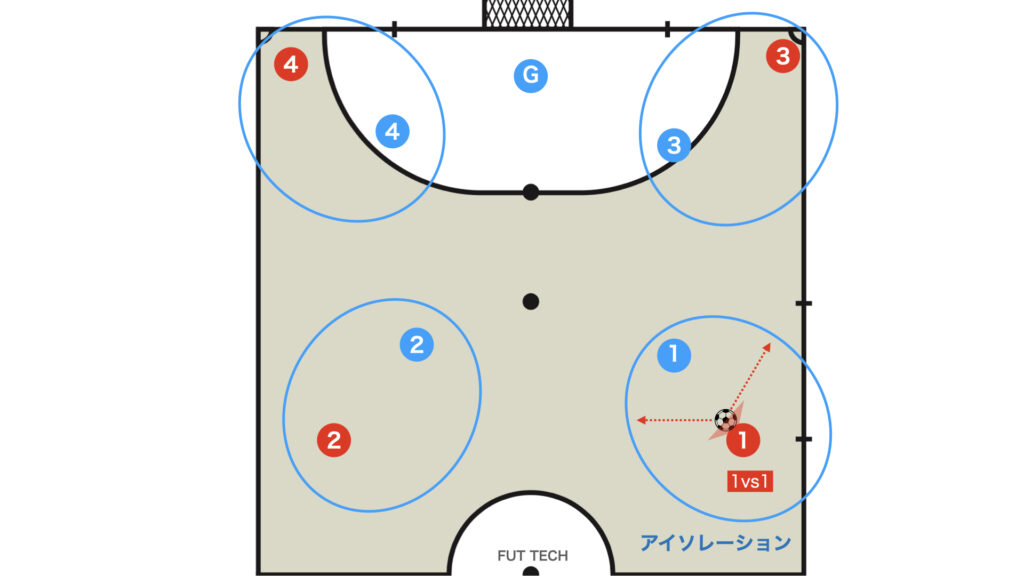
The 2-2 system is a unique formation in which all four players are isolated.
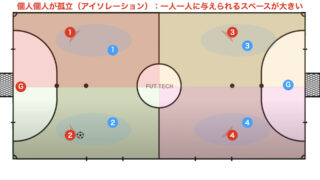
2-1-1
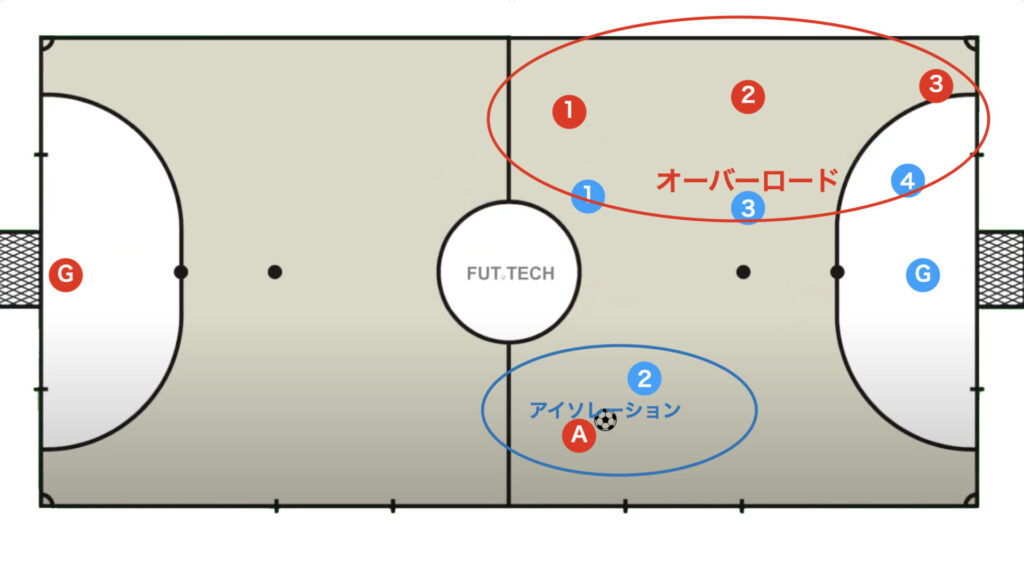
This is the most orthodox formation for Ala isolation.
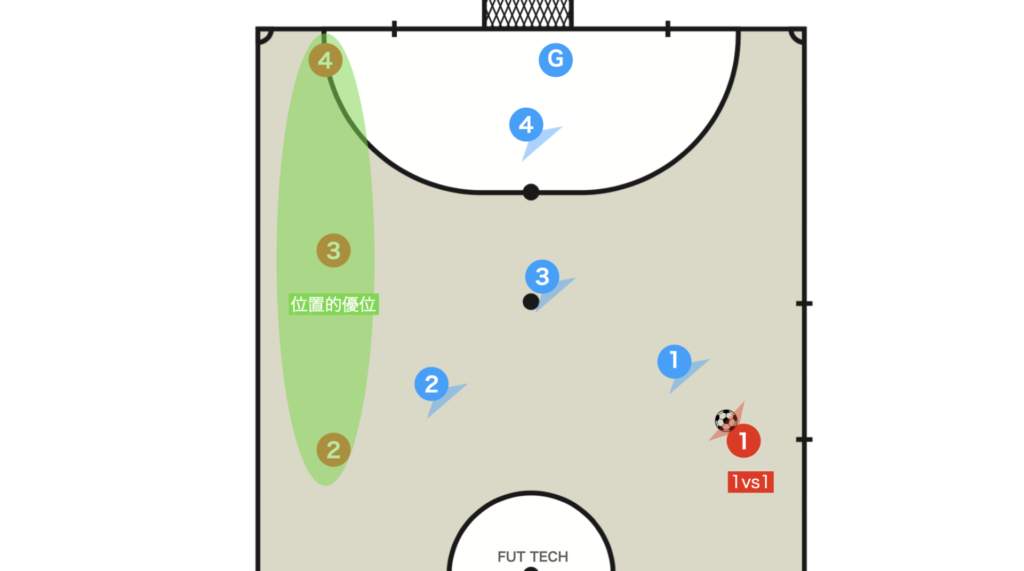
When the opponent’s defence is highly alert to covering a teammate in isolation, it is crucial to exploit the positional advantage created by the three players in overload positioning themselves in the blind spot (behind) of the opposing defence.

As shown in the figure above, if you can deliver a pass to a teammate positioned behind the opponent’s defence, it can quickly create a scoring opportunity.
The ability to deliver such diagonal passes is required of an isolator.
Fixo Isolation

In a 1-3 system, Fixo isolation can be very risky if the ball is lost, but it is effective when there is a player with an exceptional 1vs1 win rate.
There are patterns where Fixo isolation is executed as a 1vs1 in one’s own half, as shown in the figure, as well as patterns where Fixo engages in a 1vs1 near the half-line against an opponent defending in the half.
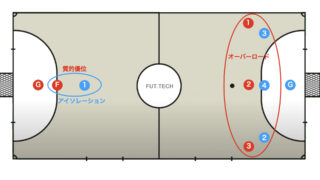
Pivo Isolation
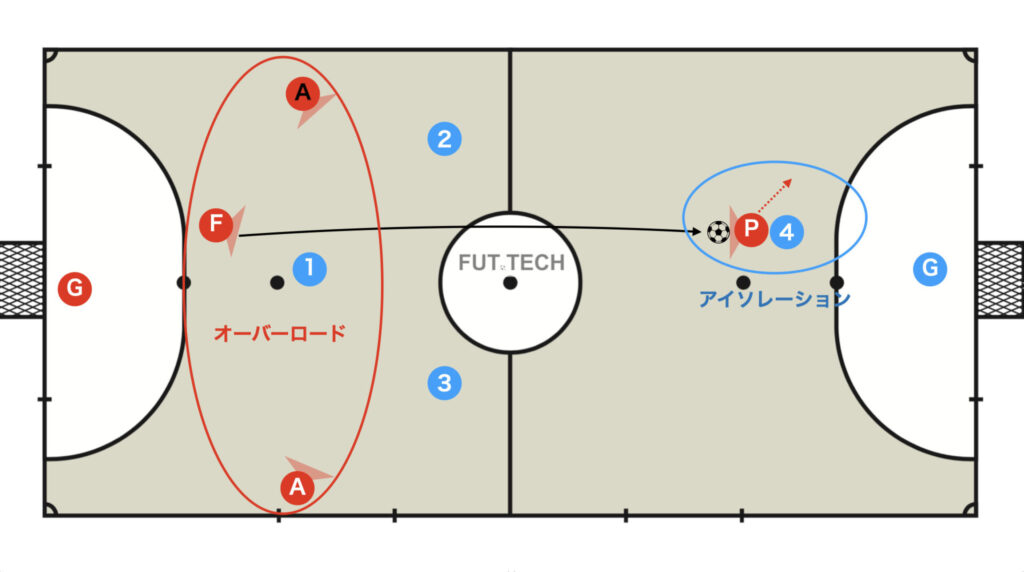
If there is a powerful pivo capable of turning and shooting, it is also effective to intentionally isolate the pivo by executing a 3-1 (3-0-1) formation where the ball is passed to the pivo and then left unengaged.
Summary
In this article, we discussed the highly renowned tactics of isolation and overload, which are used in sports other than futsal as well.
First, make sure to grasp the terminology and understand the tactical intent.
When attempting to break through with dribbling in isolation, it is crucial that everyone understands this and positions themselves to create space.
While overload may be a slightly complex concept, it is as highly valued as isolation in sports with larger teams, such as soccer.
In any case, since these two terms are opposites and two sides of the same coin, it is best to master both simultaneously.
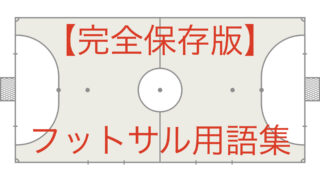
Thank you very much for reading this article to the end.
If you found this article useful, please consider sharing it using the social media share buttons above.
We regularly share valuable insights on futsal tactics on Twitter, so if you haven’t followed us yet, we’d appreciate your support!
We are committed to raising the level of futsal in Japan by sharing high-quality information through discussions with individuals who have coaching experience in the F.League and overseas.
If you have any questions or notice any mistakes, feel free to leave a comment below.
We update our articles regularly, so if you’d like to keep reading, please bookmark our site or search for “FutTech”!

